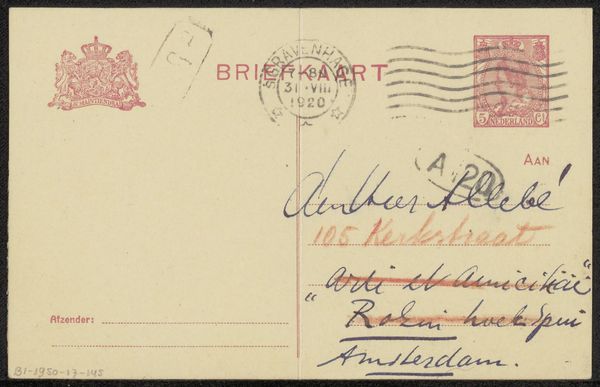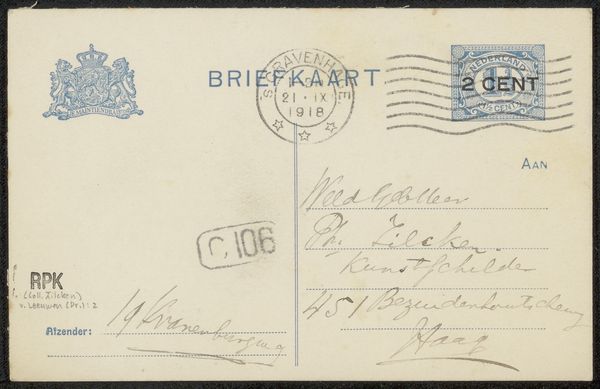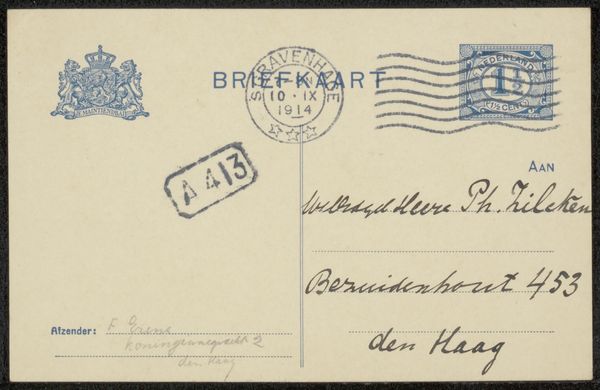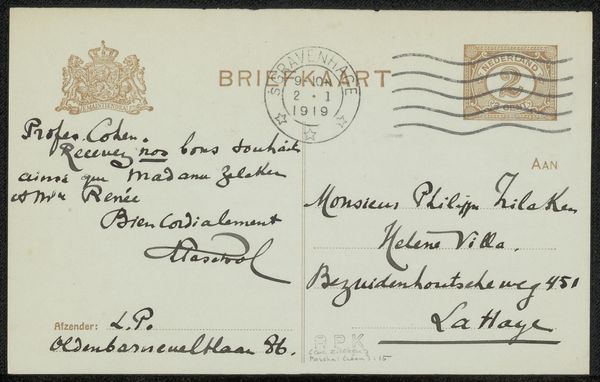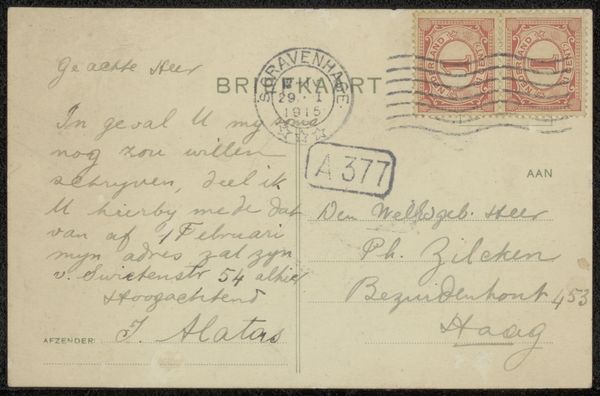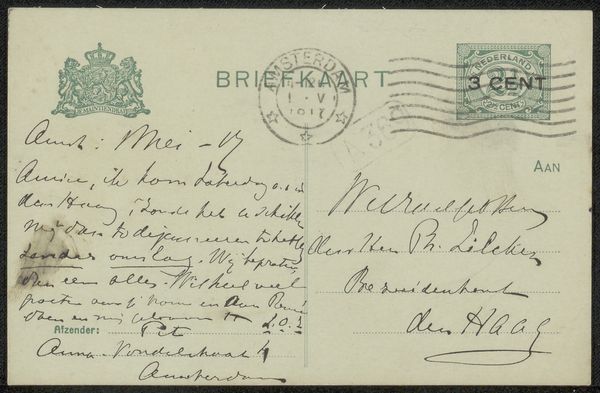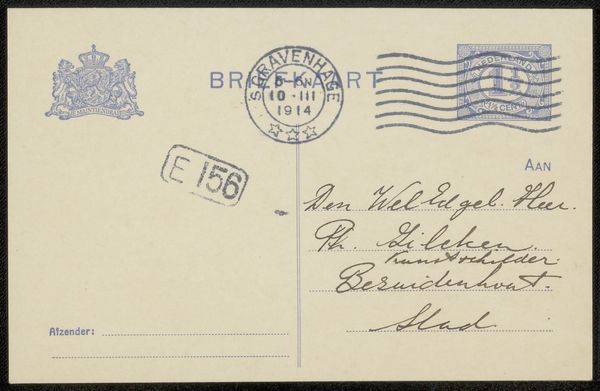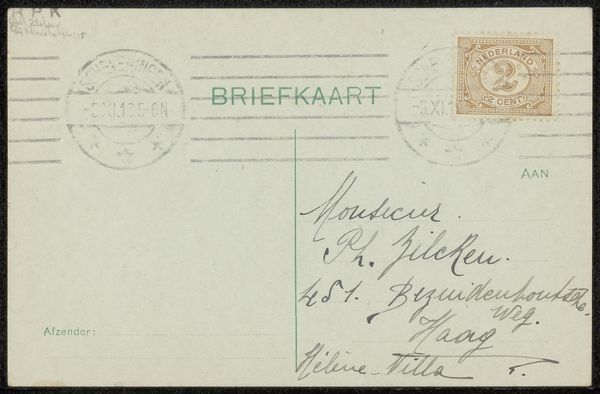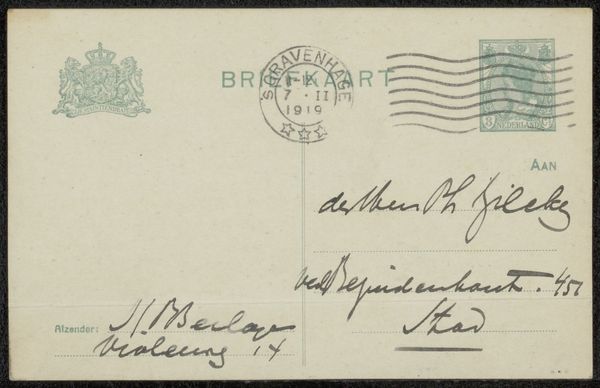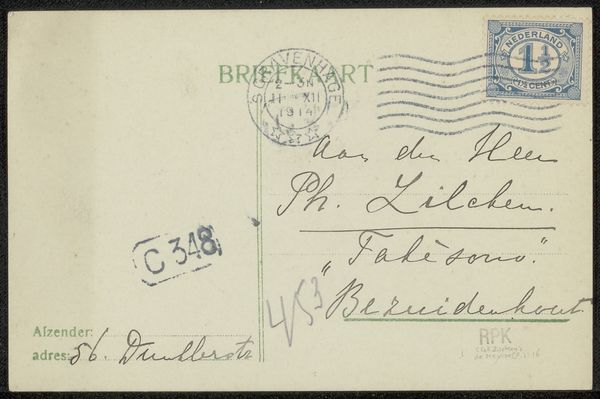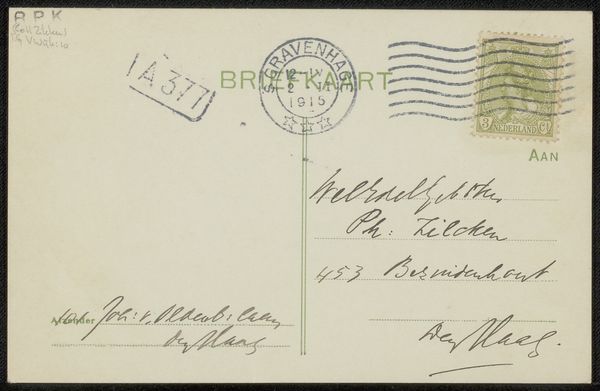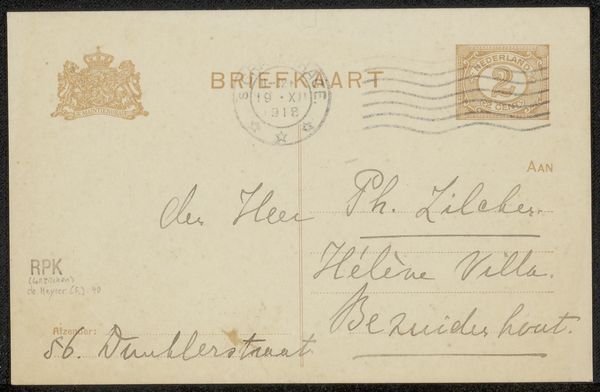
drawing, paper, pen
#
drawing
#
hand-lettering
#
old engraving style
#
hand drawn type
#
hand lettering
#
paper
#
personal sketchbook
#
hand-drawn typeface
#
fading type
#
pen work
#
sketchbook drawing
#
pen
#
coloring book page
#
calligraphy
Copyright: Rijks Museum: Open Domain
Curator: Here we have "Briefkaart aan Philip Zilcken," a pen and ink drawing on paper, possibly created between 1920 and 1925. It's part of the Rijksmuseum collection. What’s your immediate take on it? Editor: I'm struck by its intimate scale and ephemeral nature, almost ghost-like. The faded ink and delicate lettering evoke a sense of nostalgia and fragility. Curator: Indeed. Adriaan Pit sent this postcard. Think about the post-war era – the shattered empires and societal shifts – finding resonance in something as mundane as personal correspondence offers an intriguing lens. Editor: I see how you frame it. Look closely at the handwriting. The consistent slant, the looping ascenders – each stroke holds meaning, hinting at the sender's personality and state of mind. Semiotics helps us decode those nuances. Curator: Absolutely. Consider Zilcken himself, likely a part of Pit’s artistic or intellectual circle. Analyzing their potential relationship allows us to understand broader artistic trends or social movements. These weren’t isolated figures. Editor: Focusing on form, the placement of the stamp and postmark – they create a visual rhythm. There's a compositional balance even within the asymmetry of handwritten text. Curator: That balance also shows power structures at play. We are seeing the cultural capital embedded in these networks, highlighting access and privilege that isn't afforded to many others at the time. Editor: Interesting, very interesting. And the handwritten typeface! The character design! What statements are they communicating or are influenced by? Curator: By examining such pieces, we reveal hidden social landscapes within what appears ordinary. We unearth marginalized voices and complex histories. Editor: Thinking about it, what felt initially like a sentimental glance into the past transforms, thanks to your contextual layering, into something more significant. It is a beautiful transformation to note. Curator: And likewise, examining its physical properties – like its texture – brings new forms of consideration to history-telling!
Comments
No comments
Be the first to comment and join the conversation on the ultimate creative platform.
